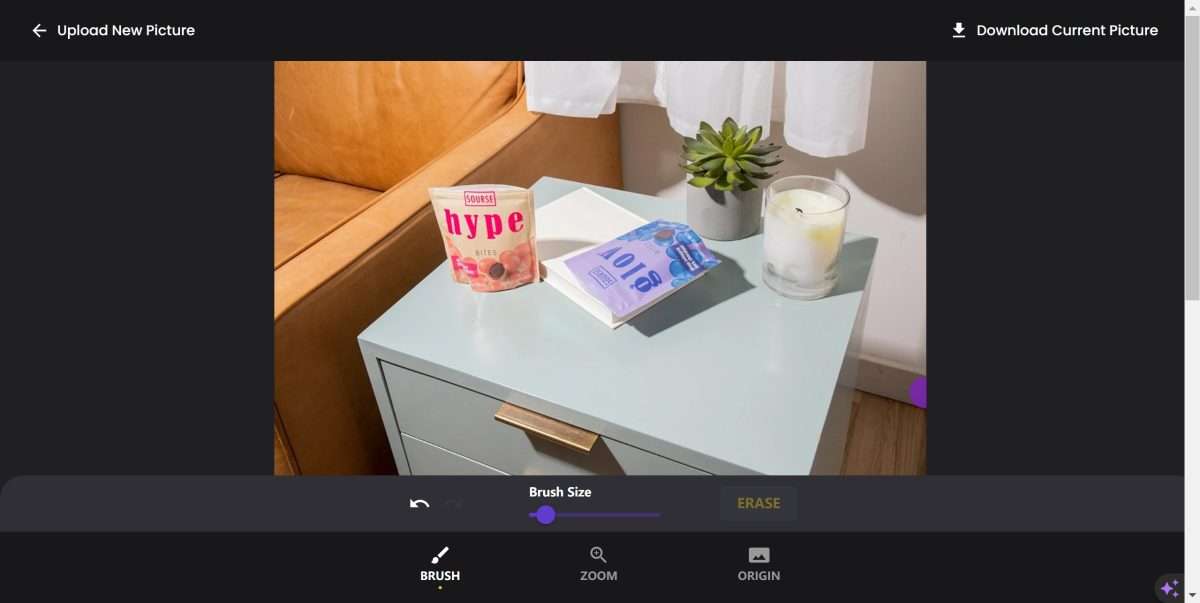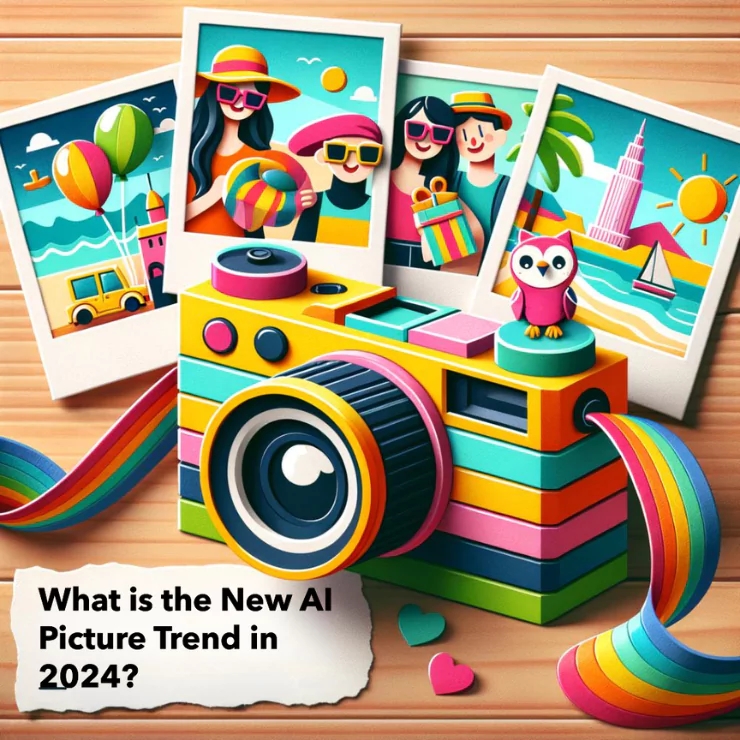Introduction: Is there an AI that can edit images?
The intersection of creativity and artificial intelligence (AI) has opened new frontiers in various sectors, of which image editing forms a significant part. As the demand for digital visuals soars, the question inevitably arises: is there an AI that can edit images? Yes.
- Introduction: Is there an AI that can edit images?
- The Rise of AI in Image Editing
- The Advent of AI
- The Role of AI in Image Editing
- Detailed Features of AI Image Editors
- Automatic Background Removal
- Object Manipulation
- Color & Light Corrections
- Practical Applicability of AI Image Editors
- Use in the Professional Field
- Accessibility for a Casual User
- ZMO.AI: A Noteworthy Player in AI Image Editing
- Overview of ZMO.AI
- ZMO AI Models and Remover.app for Image Editing
- The Future of Image Editing with AI
- Predictive AI Trends
- AI and the Future Creative Potential
- Conclusion
- FAQs
The Rise of AI in Image Editing
The Advent of AI
AI’s progression has pervaded numerous sectors, deeply transforming their operations. Rather than surface changes, we’re seeing total re-engineering. AI’s presence in areas like healthcare, finance, and entertainment isn’t the key takeaway but its substantial impact. As AI diversifies and deepens its penetration, it’s restructuring these sectors.
The evolving AI landscape is redefining processes, creating a new foundation for industry practices. Changes brought by AI are holistic and transformative, offering a fresh outlook. AI’s evolution involves its deep reach into various sectors, significantly reshaping them from the ground up. It’s not just about AI’s growth, but also its role in reshaping industries.

The Role of AI in Image Editing
Globally, image editing processes have undergone a significant transformation due to the emergence and swift integration of Artificial Intelligence (AI). AI has introduced automated tools that have the unique ability to modify and enhance images. These tools are designed to recognize certain features and aspects within an image, then make precise adjustments based on established algorithms showcasing what’s aesthetically pleasing or humanly recognizable. This technology has effectively reduced the manual effort and time traditionally involved in editing images, making it a revolutionary tool in the graphic design and photography industries.
In addition to basic enhancements, the use of AI in image editing has also opened up a whole new world of creative possibilities. These AI-based tools can now interpolate missing pixels, perform color correction, exposure adjustment, and noise reduction automatically. They can even convert simple hand-drawn sketches into detailed digital paintings, transform 2D images into 3D models, and do a plethora other advanced manipulations that once took hours of manual effort by expert graphic designers. This advancement has expanded the boundaries of what is achievable in image processing, changing the ways we think about design and visual representation.
Despite these technological advancements, it’s also essential to remember that AI alone can’t quite replicate the unique human touch. Artificial intelligence thrives on data- it adheres to patterns and creates results based on established trends. Despite its efficiency and precision, it still cannot reproduce the unpredictable, instinctual aspects of human creativity and artistic sentiment. Still, AI certainly plays a game-changing role in the image editing context, enabling professionals and enthusiasts alike to explore new opportunities for creative expression while significantly reducing the manual workload.



Detailed Features of AI Image Editors
Automatic Background Removal
AI image editors are ingeniously crafted, fortified with exceptional capabilities that are tailored to accentuate the importance of the main subject in any given image. A crucial feature, like automatic background removal, is integrated into these editors to maintain a firm focus on the leading object. This advanced functionality works by subtly eradicating any distracting elements from the backdrop, thereby ensuring that the attention of the viewer remains riveted on the primary subject. Thus, these AI image editors serve as powerful tools, facilitating the creation of visually appealing pictures that successfully direct the viewer’s gaze to the intended focal point.
Object Manipulation
Tools for image manipulation present a high level of proficiency in tasks like relocating, resizing, and eliminating any object within a graphic composition. The approach simplifies the process of image editing through a user-friendly interface, accommodating numerous tasks with just a few clicks. This kind of digital advancement provides a seamless execution of various interventions, ensuring the final output meets the user’s needs and expectations, thereby revolutionizing the way we engage with image editing.
Color & Light Corrections
Artificial Intelligence-based software for image editing possess the innovative ability to dissect and manipulate various elements within an image. These elements range from contrast to brightness, and even saturation. Through careful adjustments and refinements, these software can transform a regular image to align more with the user’s aesthetic preferences. The AI effectively bridges the gap between the original visual data of the image and the desired outcome, thereby catering to the specificities of the desired aesthetic results. These tools, through their intelligent algorithms, allow for intricate image edits, delivering a level of precision and mastery that enhances visual content interpretation and expression.
Practical Applicability of AI Image Editors
Use in the Professional Field
The robust features of AI image editors have found a firm foothold in professional avenues. They have been extensively used by marketers, graphic designers, and photographers to streamline their creativity and productivity.
Accessibility for a Casual User
AI image editing tools have truly been a game-changer in the digital world. They have paved the way for casual users to perform tasks previously exclusive to seasoned professionals, effectively democratizing the field of image editing. Now, anyone with a smartphone or computer can swiftly use these tools to enhance the quality of their pictures, correct imperfections, or add creative flair. From adjusting brightness and contrast to advanced feature alterations, these tools have given users the ability to make their pictures look professional grade.
Their impact is especially pronounced in the realm of personal photo albums and social media posts. Whereas these platforms previously displayed raw, unfiltered images, many now exhibit pictures that bear the distinct mark of professional editing. This has led to an elevation in the overall aesthetic quality of these platforms. The platforms that were once laden with everyday images now play host to a range of photos, from finely retouched portraits to beautifully enhanced landscapes, reflecting the mainstream adoption of professional editing techniques made simple by AI.
ZMO.AI: A Noteworthy Player in AI Image Editing
Overview of ZMO.AI
In the terrain of AI-based image editing, ZMO.AI sets itself apart. It is a powerhouse of solutions where AI models and tools come together to create unique content.



ZMO AI Models and Remover.app for Image Editing
ZMO.AI‘s Remover.app is a remarkable tool that can remove any unwanted object from a photo in seconds. The result is a clean, edited image, ready for use!
The Future of Image Editing with AI
Predictive AI Trends
The future of AI in image editing promises to be even more exciting. Predictive trends in AI point towards smarter algorithms that will refine editing efficiencies and enhance user experiences.
AI and the Future Creative Potential
We can look forward to AI enabling not just improved creativity but new forms of it, thereby broadening the scope of what’s possible in image editing.



Conclusion
Absolutely, the answer to whether an AI can edit images is a categorical yes. Artificial Intelligence technology has indeed brought drastic transformations to the realm of image editing. The feats that once used to be manual, requiring expertise and time, have become effortless thanks to AI inclusions. More importantly, the technology has democratized the art of image editing, making it available for everyone regardless of their technical know-how.
Leading disruptors such as ZMO.AI are propelling this concept forward. They not only harness the power of AI for image editing but also work tirelessly to ensure its benefits reach a broader demographic. This approach has paved the way towards a more creative, accessible, and exciting future. A future where technology intersects with creativity, allowing individuals to push their imaginative limits.
FAQs
- Can AI image editors replace professional editors?
While AI image editors are certainly advancing, they are not quite at the point where they can replace professional editors. AI can provide quick, efficient, and decent results, but the human touch in understanding complex creative nuances and subjective aesthetics is still invaluable. AI and professional editors instead can work hand in hand, with AI streamlining routine tasks and professionals focusing on more nuanced editing responsibilities.
2. How does AI benefit amateur or casual image editors?
AI greatly benefits amateur or casual image editors by simplifying complex tasks. Features like automatic background removal, color grading, or object manipulation that would typically require advanced skills and software are easily performed using AI-based tools. Furthermore, most AI editing tools feature intuitive interfaces, which make them easy to use and understand, breaking down the technical barrier for casual users.
3. What potential advancements can we expect in AI for image editing?
We can expect to see many advancements in AI for image editing, including mechanisms to interpret and implement personal aesthetic preferences, intelligent tools for more efficient repair work (like removing unwanted objects or correcting flaws), AI-driven creative suggestions, and perhaps even software capable of creating unique, high-quality images from scratch.
4. How is ZMO.AI contributing to enhancing the user experience in image editing?
ZMO.AI is contributing to improved user experience with its easy-to-use and efficient tools. Its Remover.app, for example, enables users to effortlessly remove unwanted elements from images, saving them time and effort. These user-friendly functionalities, combined with the power of AI, make image editing more accessible to a broader user base.
5. Will AI completely automate the image editing process in the future?
It’s certainly possible that AI will automate many aspects of the image editing process. However, it’s unlikely that AI will completely replace human involvement due to the subjective and artistic nature of the craft. We can anticipate a future in which AI assists and streamlines the process but doesn’t completely take over, thereby creating a more dynamic and collaborative working relationship between humans and AI.




